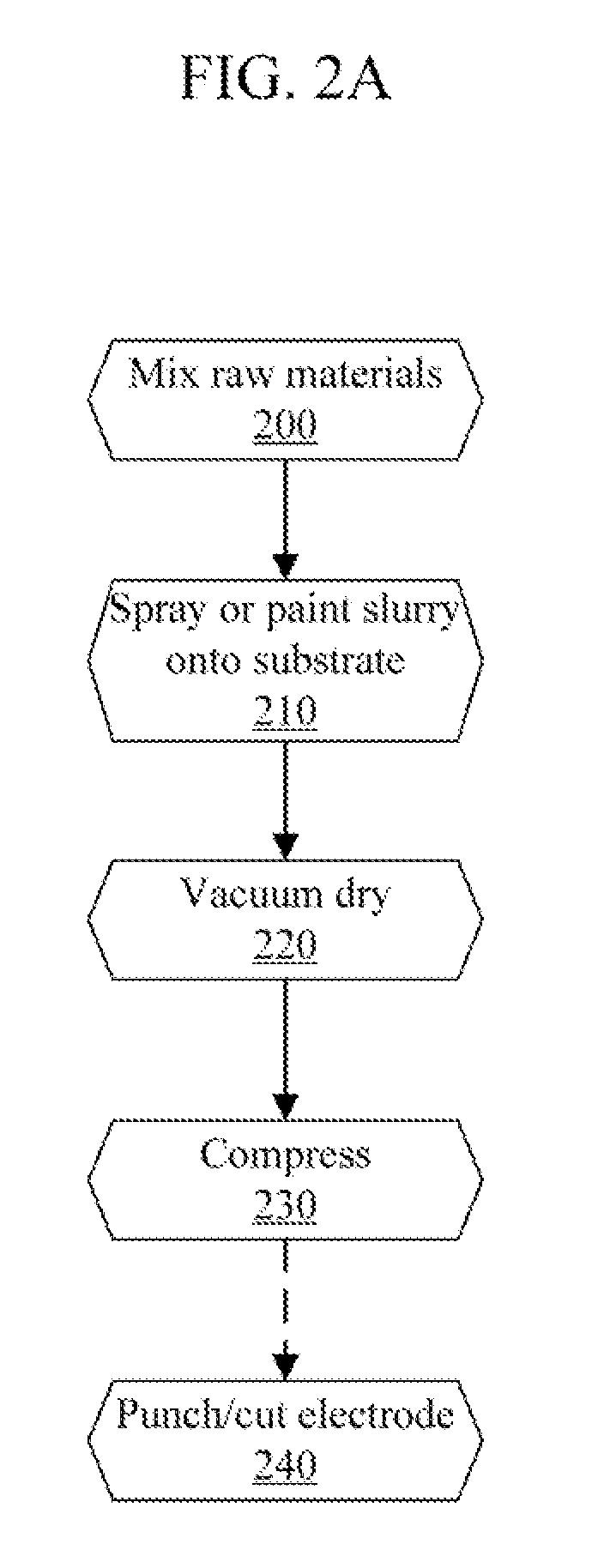Electrode for a thermal battery and method of making the same
a technology of electric motor and thermal battery, which is applied in the direction of electromechanical devices, thermoelectric devices, deferred-action cells, etc., can solve the problems of large space occupied by large automated presses, blending equipment, and drying ovens, and the cumulative time involved in just the preparation of the final separator mix is quite larg
- Summary
- Abstract
- Description
- Claims
- Application Information
AI Technical Summary
Benefits of technology
Problems solved by technology
Method used
Image
Examples
Embodiment Construction
[0040]An aqueous slurry can be used to fabricate thermal electrodes (i.e., electrodes suited for use in a thermal battery) on a current collector substrate by painting (spraying) or pasting. As used herein, “pasting” includes the process of doctor-blading. As used herein, “spraying” refers to painting a layer using a spray gun or other controllable nozzle, but does not include processes such as plasma spraying. For electrodes about 0.005 inches thick or less, spraying may be preferred, whereas pasting may be preferred to achieve thicker electrodes. Generally, the fabrication of the slurry and subsequent electrode fabrication steps are the same for spraying and pasting. FIG. 2A shows an exemplary process for fabricating a thermal battery electrode by spraying or pasting. An aqueous slurry can be formed by mixing a thermal electrode material, a thermal electrolyte material, and water 200. As used herein, a “thermal” electrode, electrolyte, or other material or component is one that is...
PUM
| Property | Measurement | Unit |
|---|---|---|
| operating temperature | aaaaa | aaaaa |
| current densities | aaaaa | aaaaa |
| weight percent | aaaaa | aaaaa |
Abstract
Description
Claims
Application Information
 Login to View More
Login to View More - R&D
- Intellectual Property
- Life Sciences
- Materials
- Tech Scout
- Unparalleled Data Quality
- Higher Quality Content
- 60% Fewer Hallucinations
Browse by: Latest US Patents, China's latest patents, Technical Efficacy Thesaurus, Application Domain, Technology Topic, Popular Technical Reports.
© 2025 PatSnap. All rights reserved.Legal|Privacy policy|Modern Slavery Act Transparency Statement|Sitemap|About US| Contact US: help@patsnap.com



